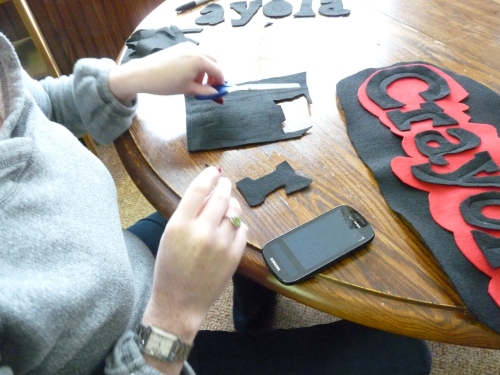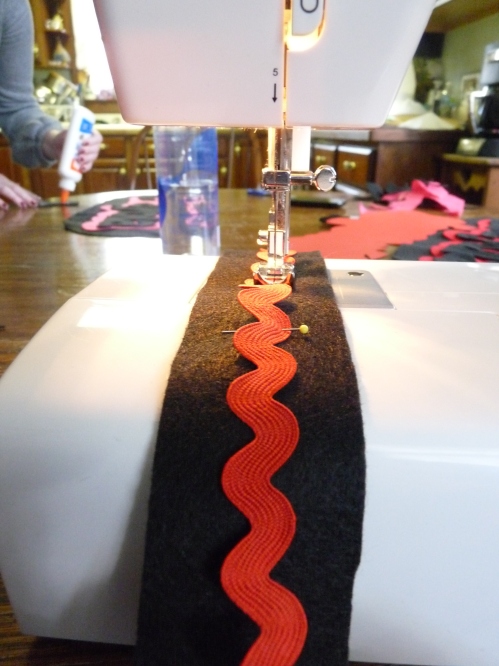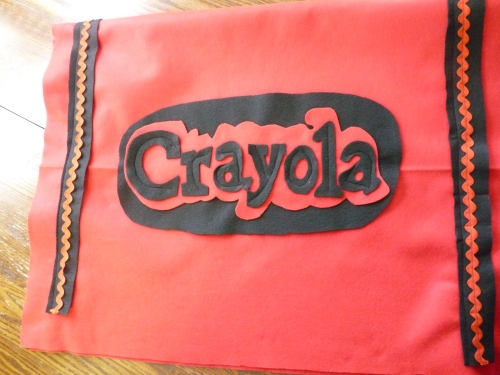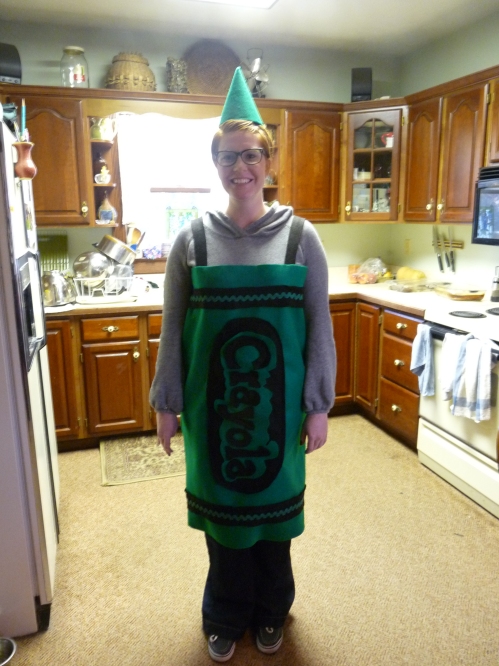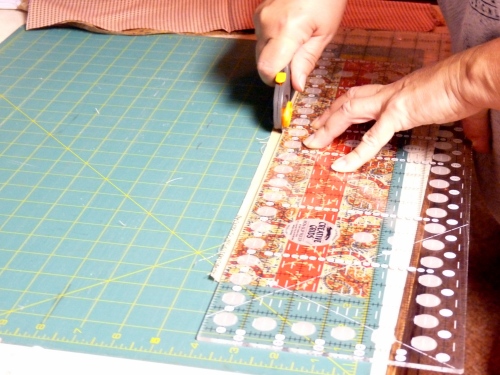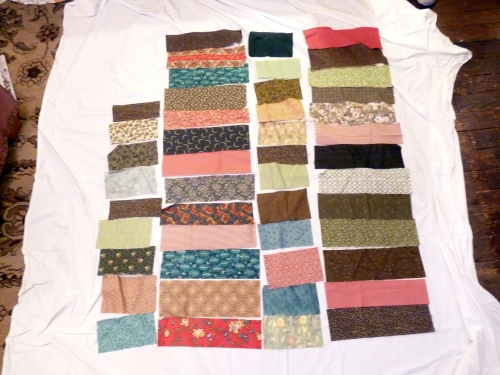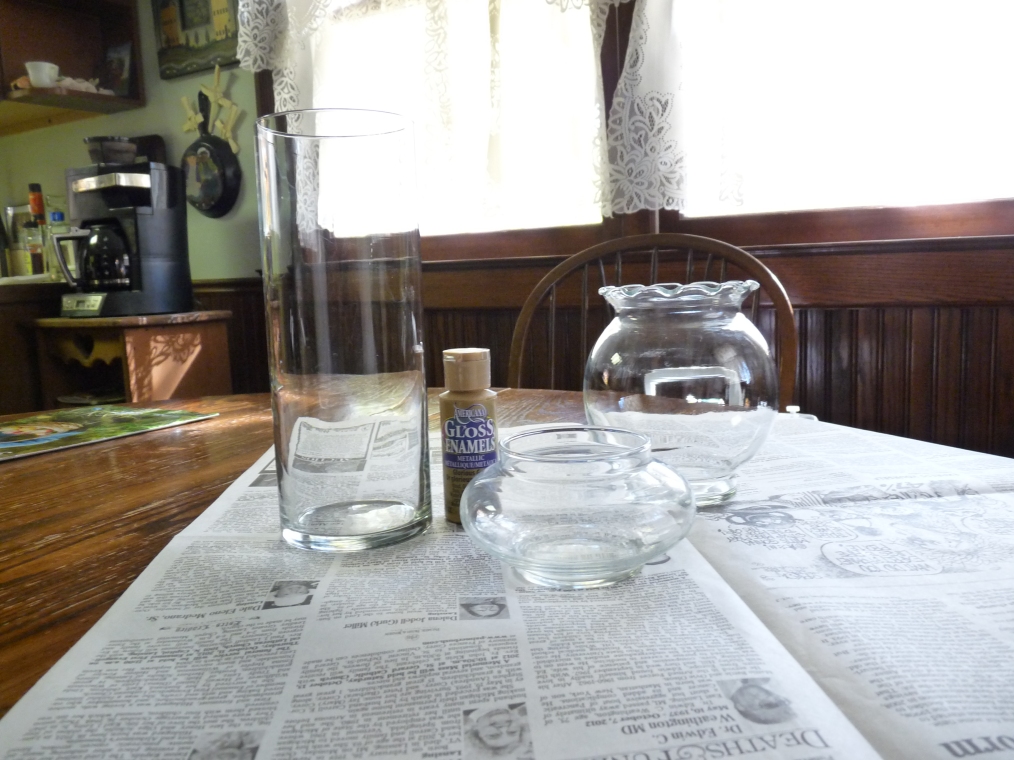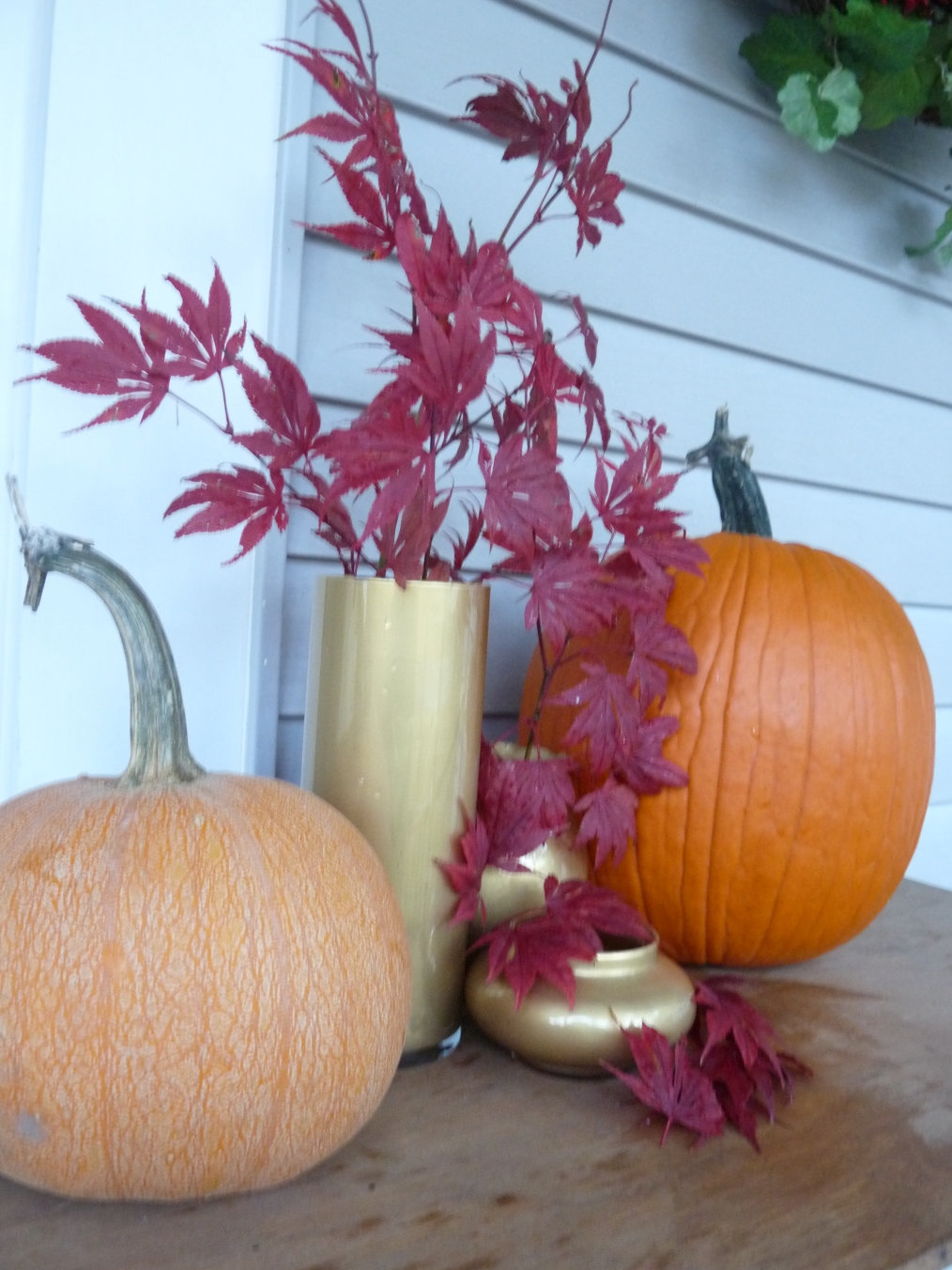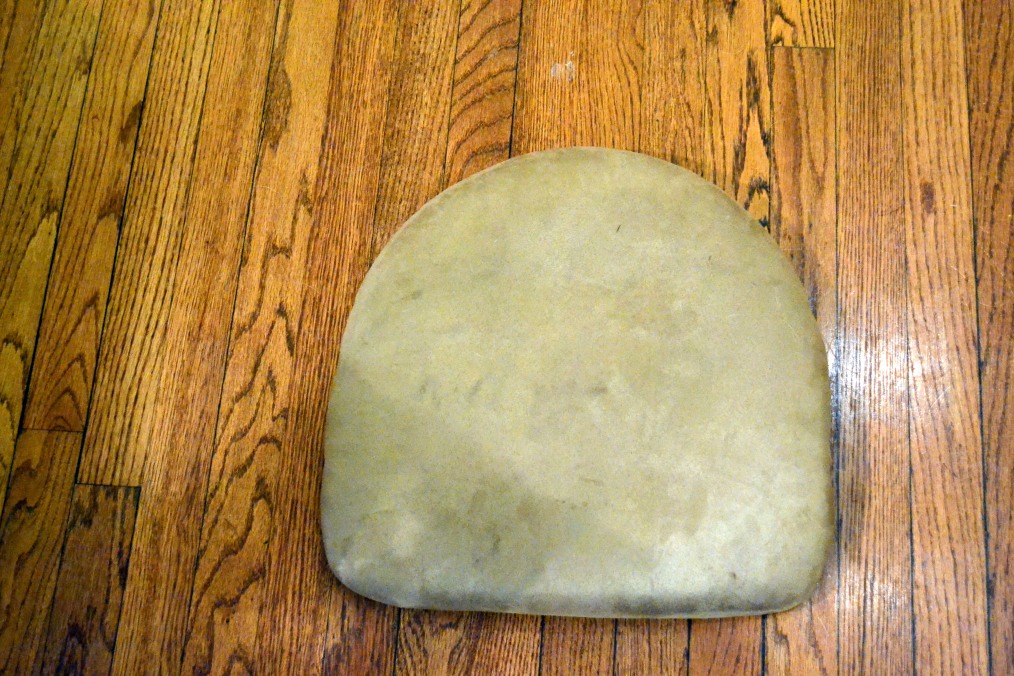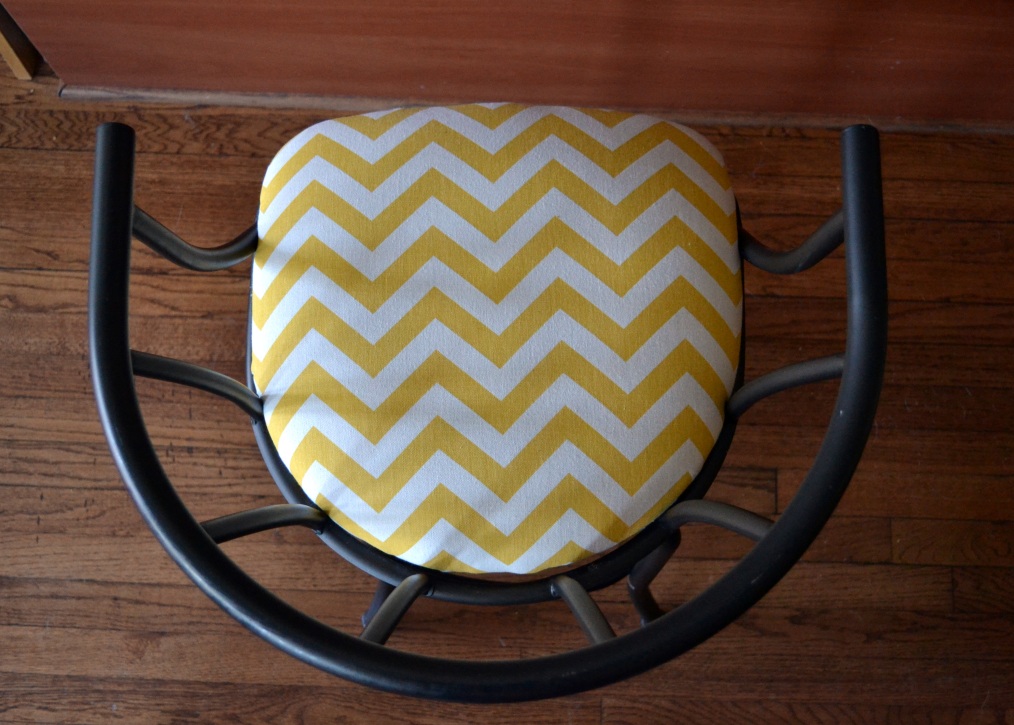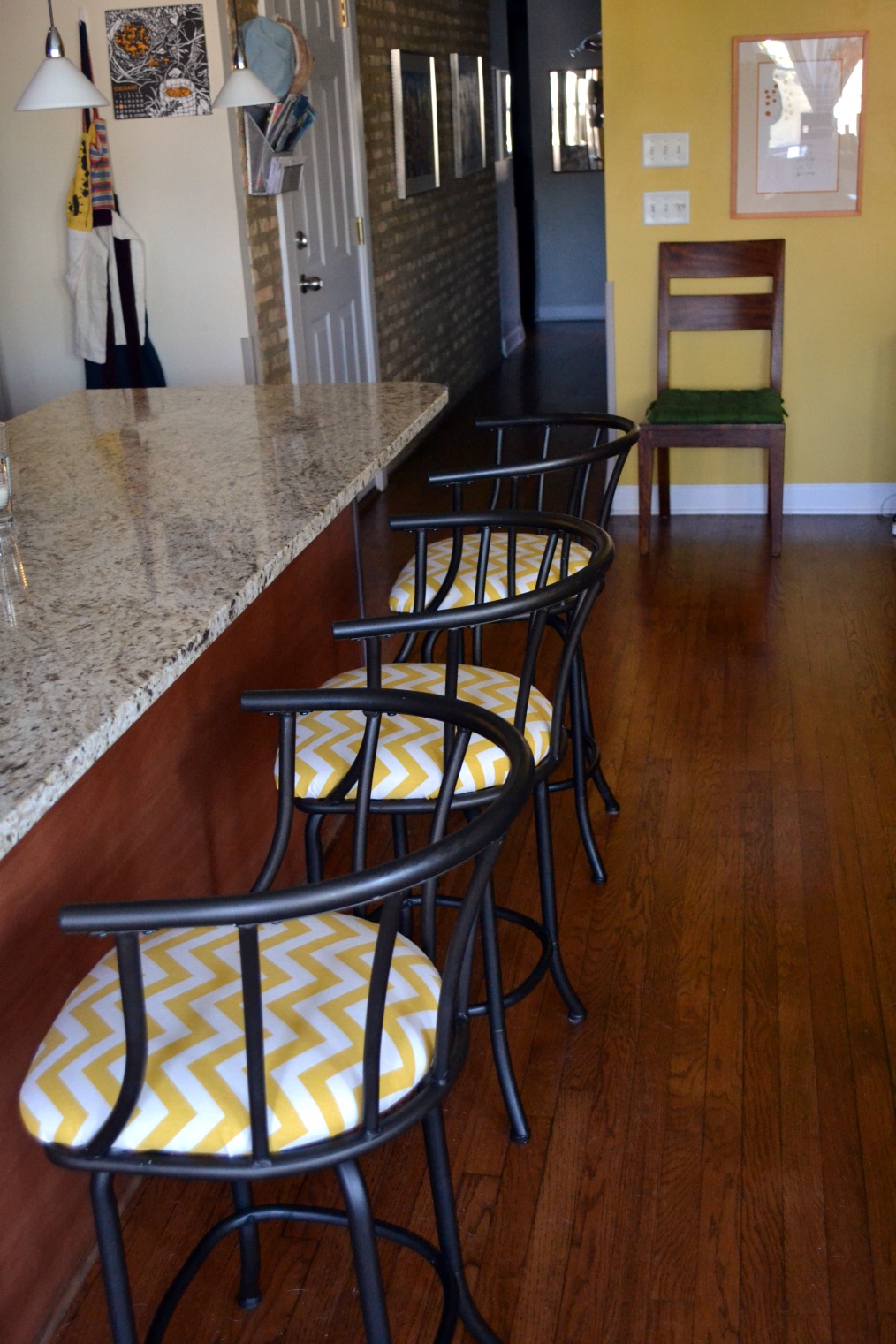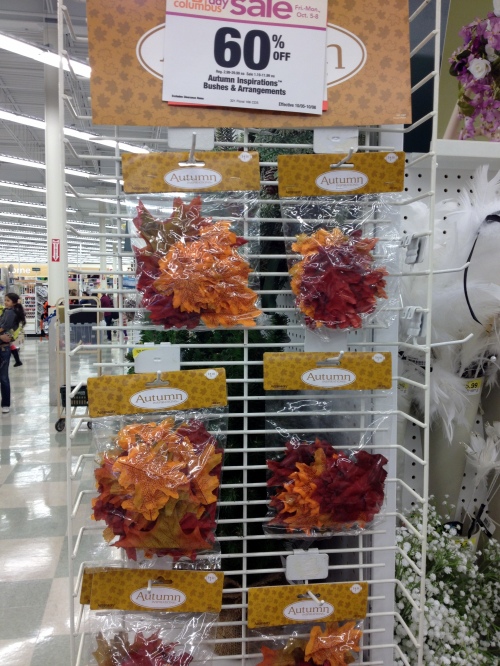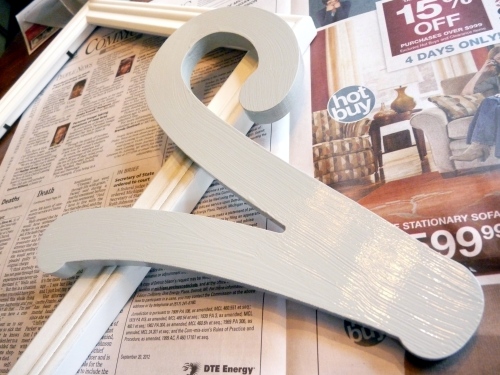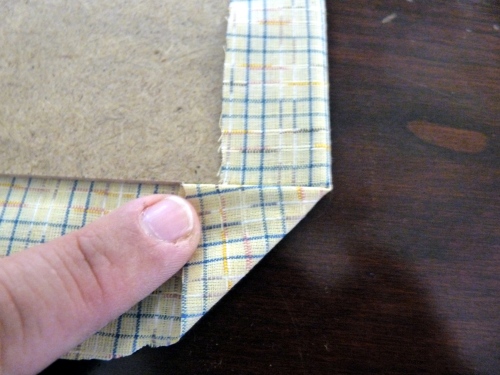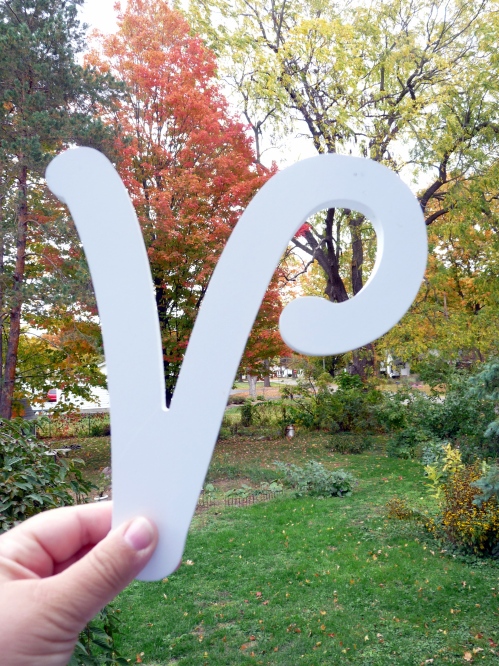Halloween was always fun growing up, but it was a rule in our family that after fifth grade you didn’t trick-or-treat anymore. We were in middle school and I guess old enough to not go out and get all that free candy. My workplace allowed us to dress up for the holiday this year. I had the idea to be crayons – Crayola crayons to be specific. A friend’s daughter had previously dressed up as a crayon, so I used her costume as a template of sorts. This project actually involved making three costumes, one for my assistant manager and two for my co-workers. It was quite the afternoon!
My supplies included black felt (1/2 yard), three shades of bright colored felt (1 yard per costume) and rick rack in the same color. I made three templates based on the previous costume, making some adjustments to make the crayon label fit an adult-sized rather than child-sized costume.
After tracing and cutting out the letters, the black oval, and the coordinating background area, I glued the background to the oval, and the letters to the background. I knew this would make the sewing a little easier. After giving the glue some time to dry I sewed around each letter to secure it to both the colored felt and the black felt, label complete!
Next I decided that a two inch wide black strip around the top and bottom of each crayon would look good. A wider strip would be fine too, but a much narrower on an adult would be too thin. After cutting those lengths I pinned the rick rack right down the center of the two inch strip and then sewed the rick rack to the black felt.
The colored felt, which is the majority of the costume is just a tube. I measured around the widest part of my coworker Heather’s body and then added a couple of inches to allow for movement, ease of getting the costume on and sitting during the day. Before sewing the colored felt into a tube, I sewed one of the black felt strips a few inches from the top and the other a few inches from the bottom. I also sewed the crayon label on the center of the large piece of felt.
Next, I lined up the edges of the large piece of felt and sewed it into a tube. Be sure that the crayon label side is inside while sewing the tube.
The final step for the body of the costume was to make straps from black felt. I made Heather’s straps one inch wide and 24 inches long. I had her try on the body of the costume to help me determine where to place the straps.
Now a crayon isn’t a crayon without a tip. We bought a pack of paper party hats to form the base of our hats. I took the paper hat apart, laid it on a piece of colored felt, and traced it, adding an extra half inch on each side. Then I cut out the felt, stapled it around the hat, and restapled it into a cone shape. Easy peasy!
Isn’t it cute?
-Emily


